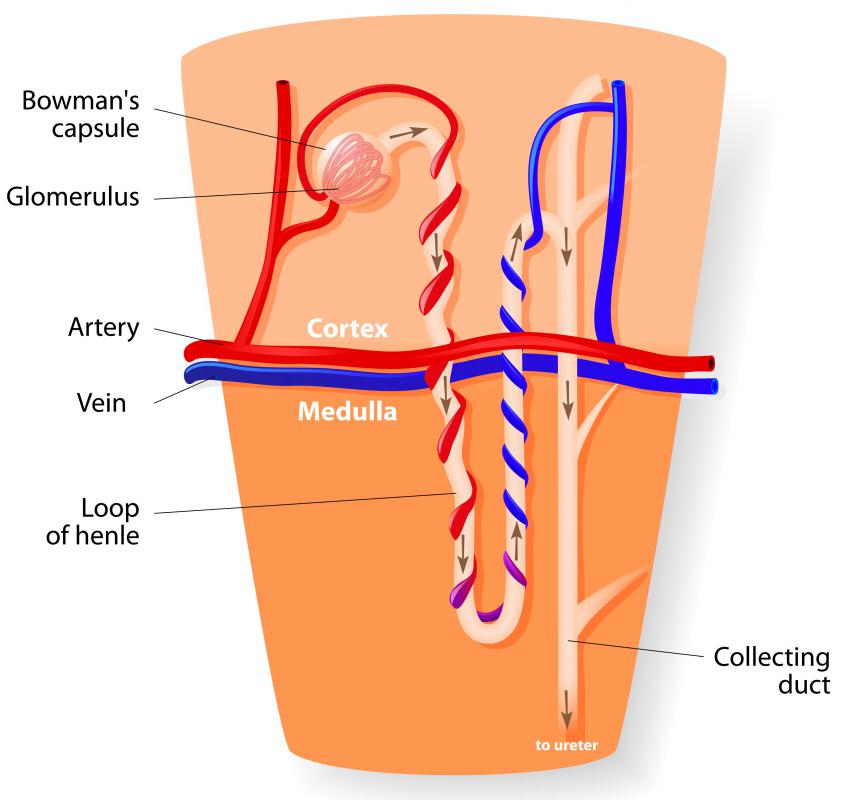At WiseGEEK, we're committed to delivering accurate, trustworthy information. Our expert-authored content is rigorously fact-checked and sourced from credible authorities. Discover how we uphold the highest standards in providing you with reliable knowledge.
What is Minimal Change Disease?
Minimal change disease is a condition of the kidneys which typically leads to nephrotic syndrome, particularly in children. It derives its name from the fact that that the disorder can only be detected under an electron microscope as its appearance is too slight a change in cell structure to be seen under a regular microscope. Nephrotic syndrome is the name for a group of several symptoms, such as high cholesterol levels, low blood protein, high triglyceride levels, and excessive protein in the urine.
The disease starts in the nephrons, which are elements in the kidneys that make urine and filter the blood. It develops when miniscule blood vessels in the nephron called glomeruli are damaged. There are several suspected causes for minimal change disease, including a viral infection, allergic reaction, or a poor response to a recent immunization.

Though minimal change disease does not have physically obvious symptoms, there can be some visible signs of nephrotic syndrome. A patient may have urine that looks foamy, a small appetite, and experience weight gain as a result of fluid retention. There may also be swelling of the abdomen, feet, ankles, and eyes.
Besides swelling, it can be difficult to recognize nephrotic symptoms brought on by minimal change disease in physical exam. Urine and blood tests often help to uncover some of the indications of the former condition, such as a large amount of protein in the patient’s urine, high cholesterol or a low albumin level in the blood. Some doctors may also perform a kidney biopsy in order to obtain tissue for examination by an electron microscope; this is typically the best way to diagnose minimal change disease.
The most common way to treat minimal change disease is to administer corticosteroid drugs. Depending on how the patient responds to treatment, the drugs may be taken for a period as brief as a month or administered indefinitely in order to keep the condition from returning. Corticosteriods are most effect with children, though adults also take the drugs. If the disease continues to return, many doctors will start the patient on cytotoxic therapy where drugs such as cyclophosphamide, chlorambucil, and cyclosporine may be administered.
Many doctors will also treat the swelling associated with the disease. This can include the administration of water pills, also known as diuretics, and angiotensin converting enzyme (ACE) inhibitor drugs. Patients may also undergo a program to control blood pressure and reduce salt intake.
AS FEATURED ON:
AS FEATURED ON:











Discuss this Article
Post your comments